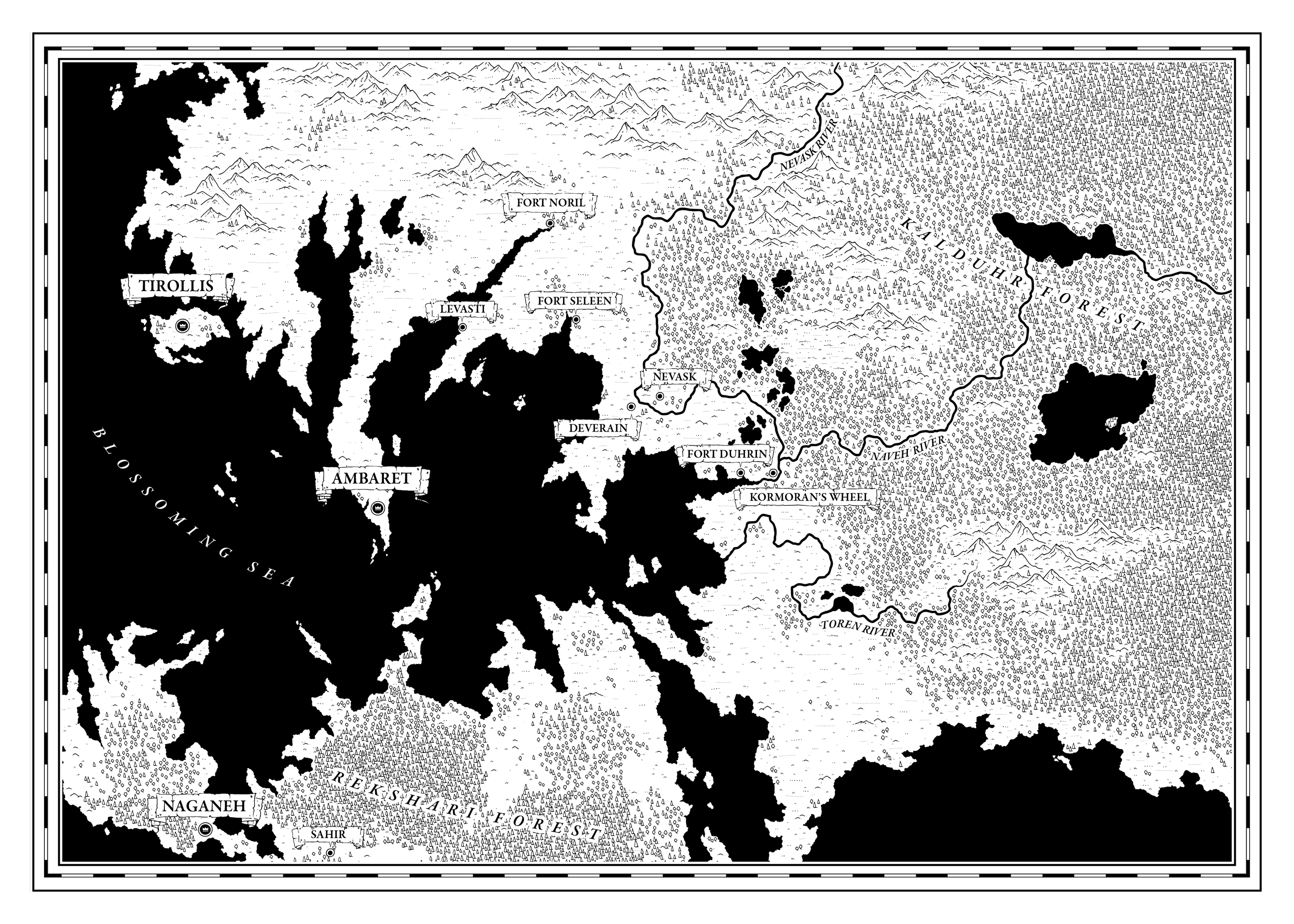
One-shot Review: Trophy Gold
Temporary desertions have once again opened the door for a one shot review of another system. This time, it’s Jesse Ross’ Trophy Gold. In truth, I’ve been sitting on this review for well over a week, but we will get into why later.
As usual: Take this review for what it is - a short exposure. I ran this game as a 5 hour-long one-shot. That means that we did not really cover the downtime rules (not that it’d matter), nor did we have access to the companion book: Trophy Loom.
With that said, lets get into it. This ends up being somewhat rambly, so you’re welcome to skip to the conclusion.
The What
For the unfamiliar, Trophy Gold is a narrativist, collaborative Tabletop RPG about a group of Treasure Hunters entering a doom-filled forest that “does not want them there”. What we have is a moody, gritty horror game fovused on themes where characters are scrambling to survive in a world that wants to consume and drive them mad.
This is great - a game that is right up my personal alley. Or rather, it should be.

The Bad - Lost in the woods
Trophy Gold is a game focused on exploring a mysterious setting, but not one that its going to talk about (maybe it does in loom. but not in the core). In the tradition of old-school style games, The game attempts to give you a few pieces and directions, and then stops before it begins to poison you. Then, it expects a combination of party input and random rolling to bring a scenario to life. That’s all fine, but what exactly are we trying to bring to life? What does this game’s core gameplay loop look like? How do the rules fit in?
I’ve never quite encountered a game so pathologically vague about its execution as Trophy Gold is. for a set of rules that only encompasses about 30+ pages, I found myself having to re-read it multiple times, and refer back to it multiple times when the players also found themselves similarly perplexed.
One reason for this is despite being a collaborative, narrativist game, Trophy adheres to an extremely rigid structure: Rather than as a continuous ‘story’, Trophy imagines that the characters are actors on a stage, and players are given explicit goals before they can move to the next staged scene (or ‘set’). To play this game, Trophy demands that you are working from a prewritten adventure module, or at least a module’s rigid structure. So in that regard, you can’t ‘jump off’ script.
So, the players have a goal: When is this goal achieved? What happens when the players feel the scene is exhausted but the goal is not yet achieved? For a hint, the game has a meta currency called ‘Hunt Tokens’, and with three of them, the players may combine them to achieve the Set Goal. Is this how it is supposed to go? Getting three of these tokens can actually be extremely challenging. This is just presented as one way. It is suggestive, but not prescriptive.
Except in how to roll the dice, Trophy will not tell you much definitively about what is supposed to happen. Rituals are frustratingly vague and are often at odds with what your rolls are allowed to accomplish; Conditions are mysterious. Pacing incursions is nebulous. Are the players supposed to take turns? These are just some samples of questions that came up that the table was not able to satisfy on its own.
And these are the core problems with Trophy Gold. It is maddeningly vague and it is absolutely begging for a 5-10 page ‘example’ play-by-play. It is also maddeningly rigid: The stage structure instantly made my players chafe. For a game that encourages players to be ‘curious’, it was annoying for the player and myself when I had to pull her back because she wanted to explore forward, which would have moved her into the Incursion’s next set before the goal was accomplished.

The Good - Guts of Gold
So, I am personally frustrated with Trophy Gold, but there are some good things about the system.
Character creation is a treat, and where the ‘let them write’ part of Trophy really shines. While there is very little mechanically to decide, players are intentionally given statements with no answers, and they’re allowed to figure them out themselves.
The book is mostly Incursions, the game’s quick adventure outlines. You get over a hundred pages of these, and While they are more detailed sketches than actual full fleshed adventures that oddly rarely deal with the forest, they all carry a strong theme and some good set pieces.
For the purpose of one-shots, you’ll find yourself plenty of material.
The system has a concept of Burdens - Basically, it costs money to outfit your character and maintain their lives. For each burden they take on, characters must return with a certain amount of gold or well, that’s it - they go into bankruptcy or are taken by their creditors.
This mechanic forces players to carry on risky adventures when they would not otherwise, and makes them balance the amount of equipment with the amount of adventuring they must do to re-coop the cost. I enjoyed watching the players weigh pushing forward unto death, or risk financial ruin.
The combat system rules are something I may lift in the future if I ever ever need a quick-combat system.
In Trophy, the players each roll a light=die, take a number the resulting number as the number that they receive wounds, and then begin rolling black-die. If their two highest die meet-or-beat the monster difficulty, they win. If any of the die match their own, they take one burden per-die. Then they add another die, and repeat until the monster is dead.
This worked really well in practice, though I can say for this game it can be brutal for boss fights. All but one character walked away from the final boss battle, which made me wonder how Trophy would manage a long campaign when it is so easy to die by a bad dice roll.

Conclusion - TL;DR
Trophy Gold was a pretty frustrating system on some level. It’s a narrative game that wants to accomplish something, but sticks to vague well-wishes and some rote mechanical language, hoping you will figure out the middle needed to get there. Its explanations are loose but its structure is rigid.
There’s a good game here. The theming and difficulty are great. The Hunt Rolls, Combat Rolls, and the character creation are all solid, and provide a great leaping off point. A few pages of example play could go a long way to clarifying the author’s intent, or maybe even a “How to Play” that isn’t about 3 sentences of sentiment would help.
I probably will not play this game again. I am glad to have played it, but in the end it probably does not really suit me or my group. I would recommend it to someone who loves a gritty narrativist game mixed with the OSR.